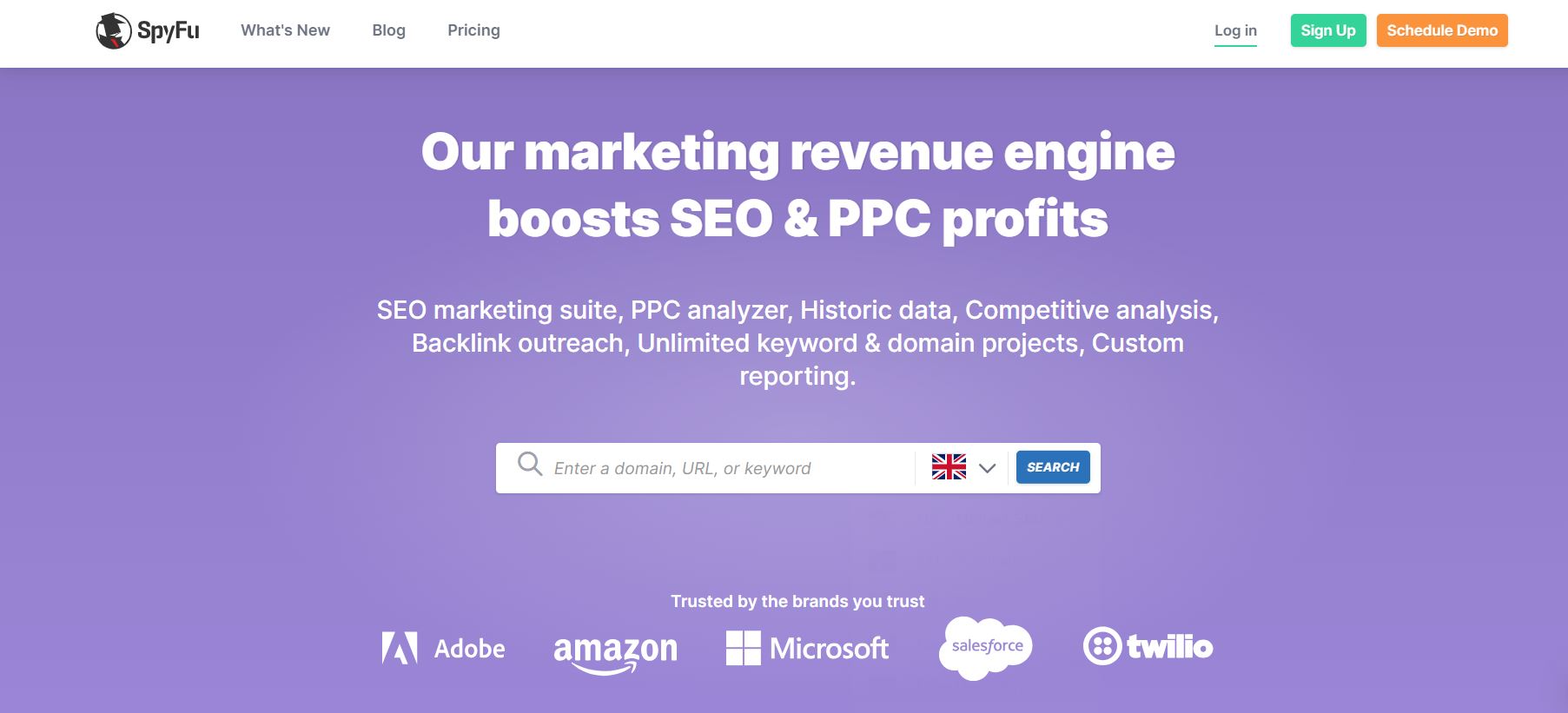Are you ready to take your search engine optimisation (SEO) strategy to the next level? By performing a competitor analysis, you’ll uncover valuable insights into how they outperform you and discover actionable steps to reclaim your position.
In this blog, we’ll guide you through the following:
- What is an SEO competitor analysis?
- When should you conduct an SEO competitor analysis?
- How to conduct an SEO competitor analysis
- SEO competitor analysis tools
What is an SEO competitor analysis?
An SEO competitor analysis is a strategic process that involves examining and evaluating your competitor’s online presence to gain valuable insights and leverage them for your SEO strategy. By scrutinising their website structure, content quality, keyword usage, backlink profiles, and overall search engine performance, you can uncover their strengths, weaknesses and areas where you can outperform them.
This in-depth analysis allows you to understand what sets them apart, where they may be falling short, and how you can capitalise on those opportunities to enhance your own SEO strategy.
When should you conduct an SEO competitor analysis?
While there’s no fixed schedule that suits every business, it’s advisable to conduct an SEO competitor analysis at least quarterly or, at the very least, twice a year. However, the frequency can vary depending on your industry and your specific goals.
In essence, the timing of your SEO competitor analysis should be determined by your need to stay informed about your competitor’s strategies and to identify opportunities for improvement in your own SEO efforts.
There are a few things that need to be considered when doing a competitor analysis for SEO:
1. Content planning
When it comes to content planning, examining your competitor’s successes can be a game-changer. By analysing competitor content, you can identify which of their blogs, web pages and resources perform well and aim to replicate this in your own strategy.
This will allow you to identify the level of effort required to surpass your competitors with specific keywords and topics. With these insights, you can strategically align your content marketing, directing your resources and efforts where they will generate the maximum impact.
2. Your post-content performance
After publishing your new content, it’s crucial to assess its performance to determine if you’re heading in the right direction. By monitoring how your content is resonating with your audience, you can gauge its impact and make informed decisions.
Analysing metrics such as engagement, traffic, and conversions will provide insights into whether your content is effectively reaching your target audience and achieving your desired goals.
3. Sudden ranking drops
Experiencing a sudden and unexplained drop in rankings can be disheartening. In such situations, a competitor analysis can be your source of guidance. You can uncover the potential reasons behind the drop by digging deeper into the strategy of your competitors.
Through careful examination, you will be able to identify critical factors such as improved content, stronger backlink profiles, or improved user experience that have given your competitors an advantage.
So, instead of letting a ranking drop discourage you, let a thorough competitive analysis lead the way to reclaiming your rightful position in the search engine rankings.
4. A stagnation period
If certain pages have been stuck in a state of stagnation, despite putting in your best efforts, it’s time to consider the power of competitive analysis. By using a strategic approach, you can identify any weaknesses and determine why your progress has stalled.
By studying your competitors’ successful tactics and identifying areas of improvement, you’ll have the opportunity to re-energise your SEO efforts, fine-tune your content, and drive your pages towards development and success!
How to conduct an SEO competitor analysis
Analysing your SEO competitors can uncover new insights to help improve your online presence.
In this next section, we’ll guide you through the step-by-step process of conducting a thorough and effective SEO competitor analysis.
1. Determine your competitors
Websites that appear prominently in organic search results for your target keywords on search engines like Google are your SEO competitors. Start by doing a Google search for your top keywords and then look at the websites that appear first on the results page. If you would like to find out who your SEO competitors are, you can use an SEO tool such as Semrush’s Organic Research.
The tool allows you to enter any domain when you first open it, as shown below, and you can then click Search.
Afterwards, you’ll see a page with several options at the top.
By selecting Competitors, you will see a list of the chosen domains’ competitors.
This section will display websites that compete with the selected domain for identical keywords, offering a comprehensive way to explore your competitors.
Remember: The free version offers this information, but for more detailed results, you can explore Semrush’s subscription plans and pricing options.
2. Identify keyword gaps
Before delving into the examination of link-building strategies or on-page SEO improvements, pay close attention to the keywords that your competitors are ranking for but you aren’t. Although you can potentially outperform any competitor across all niches and keywords, some can be near impossible to rank for due to the amount of resources required. In this situation, you can use a competitor analysis tool to determine the overall strength of your competitors and then analyse certain elements, such as:
- Domain authority.
- Country and age of the domain.
- Inclusion in search engine indexes.
- Listings in directories.
- Backlink data.
- Volumes of traffic.
- Indicators from social media.
Make notes of the details and identify any areas that you can leverage to your benefit. But remember, the greater the challenge posed by a competitor, the more robust their SEO. As a result, overtaking them in rankings becomes more difficult.
3. Explore fresh keyword opportunities
Conducting a term frequency-inverse document frequency analysis, often known as TF-IDF, can serve as an effective technique to enhance your current content with relevant keywords that your competitors are using. In straightforward terms, TF-IDF represents a calculator of how frequently a keyword is present on a page (term frequency) multiplied by the expected occurrence of that keyword on a page (inverse document frequency).
You can use this to find low-competition keywords you might have overlooked. While analysing TF-IDF you may also find many of the top-ranking pages for your target keywords have a lot of similar terms and phrases. To increase your relevance in search, you must either add those terms to already relevant pages or develop new content.
Although this method is a little trickier compared to other strategies, it can quickly evolve into a crucial element of developing a thorough content strategy.
4. Examine on-site optimisation and website content
Utilising a competitive analysis tool (we’ve recommended a few at the end of this blog), to examine the on-site SEO tactics of your competitors will provide you with access to a wealth of useful information. You’ll find out what type of content they post, how frequently, and which keywords they’re focusing on.
Give particular focus to:
- Metadata.
- Approaches to headlines (e.g., length of titles, the inclusion of keywords, correct usage of H2s, H3s, etc.).
By doing this you can identify their strengths and weaknesses, learn from them, and improve your on-site SEO performance. SEOquake is a great free tool to help you uncover this information.
5. Explore competitor backlink profiles
An integral aspect of conducting a competitive analysis involves uncovering the sources from which your competitors are acquiring their backlinks. This is a great method for discovering fresh opportunities and constructing top-tier links for your own website.
6. Understand how competitors utilise social media
As social media plays a key role in SEO, social listening tools can be invaluable for keeping up to date with your competition’s posts.
To learn how your competitors are leveraging social media, alongside these tools, you can conduct straightforward research by observing:
- The platforms your competitors utilise (or don’t use).
- The frequency of their content updates.
- Their communication approach with their followers.
- The content types generating the highest engagement.
You should also monitor user reviews to gain insight into the things their customers appreciate about their product or service and use that to find areas where you can improve!
SEO competitor analysis tools
In order to analyse competitor sites efficiently, you must consider three factors:
- Top keywords
- Backlink quantity and sources
- High-performing pages
We will review a few competitor analysis tools below which can provide you with this information.
1. Ubersuggest
Ubersuggest makes it simple to find and examine the above data rapidly, enabling you to adapt your strategy with the goal of surpassing your competitors. Here’s how:
- Upon reaching the homepage, input your competitor’s URL and click the search button.
- On the left-hand side, navigate to the keywords section.
- A list of keywords will then be shown.
This particular website holds rankings for more than 322,000 keywords, providing a comprehensive insight into their objectives and sources of traffic.
You’ll also have visibility into the monthly search volume, its Google search ranking position, the estimated traffic for the keyword, and the level of competition.
2. Semrush
Semrush is a versatile tool that facilitates comprehensive competitive research for any domain and empowers you to optimise your campaigns using the acquired data. This tool allows you to achieve four important objectives:
- Keyword analysis.
- Competitor research.
- Website audit.
- Backlink evaluation.
Semrush delivers up-to-the-minute updates on search engine results pages (SERPs), keywords, and related data.
3. SpyFu
Spyfu essentially eliminates the need for manual research in competitive analysis tasks by supplying the required data. The tool’s strength lies in its ability to generate all vital information.
Additionally, Spyfu can identify effective webpages for link acquisition. Simply input a keyword phrase in the search bar, and Spyfu examines the backlinks of the top 5,000 ranked sites, including those for similar keywords and identifies the common backlinking domains among these ranked sites.
The tool also allows users to filter these webpages by different types of backlinks.
Staying ahead of the competition in an ever-evolving landscape is key! With our comprehensive step-by-step guide to conducting an SEO competitor analysis, you can now uncover invaluable insights. From analysing keywords and backlink strategies to understand your competitors strengths and weaknesses, this approach empowers you to fine-tune your own strategies for success.
By using these techniques, you can enhance your search engine visibility, optimise your content, and ultimately outshine your competitors!
LOCALiQ’s expert SEO services can help businesses gain long-term visibility across search engine results pages. Get in touch with us today to elevate your online presence and stay one step ahead of the competition.












